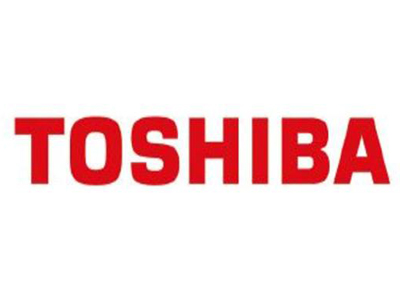Toshiba Intros Low-Power Tech for Embedded SRAM
Toshiba has found another way to extend the battery life of mobile devices.
Toshiba said on Thursday that it has developed an innovative new low-power technology for embedded SDRAM. This tech will be used in smartphones, tablets and other mobile devices to extend the battery life, thus allowing consumers to enjoy more movies, games and other media on a single charge.
According to Toshiba, its new tech actually reduces active and standby power in temperatures ranging from room temperature (RT) to high temperature (HT). This is done by using a bit line power calculator (BLPC) and a digitally controllable retention circuit (DCRC).
"Longer battery life requires lower power consumption in both high performance and low performance modes," the company explains. "As low performance applications require only tens of MHz operation, SRAM temperature remains around RT, where active and leakage power consumptions are comparable. Given this, the key issue is to reduce active and standby power from HT to RT."
Toshiba created a prototype using this new tech which reduced active and standby power consumption at 25°C by 27-percent and 85-percent, respectively. The company explained that the BLPC will predict the power consumption of bit lines by using replicated bit lines to monitor the frequency of the ring oscillator. It then minimizes the active power of the SRAM in certain conditions by monitoring the current consumption of the SRAM rest circuits.
"The DCRC greatly decreases standby power in the retention circuit by periodically activating itself to update the size of the buffer of the retention driver," Toshiba said.
The company introduced the new tech and prototype on Wednesday during the 2013 International Solid-State Circuit Conference in San Francisco, CA. Toshiba didn't say when mobile products would actually begin to incorporate this new tech, but instead said it will continue to develop technologies that contribute to high performance, low power system LSI for mobile products.
Contact Us for News Tips, Corrections and Feedback
Get Tom's Hardware's best news and in-depth reviews, straight to your inbox.

Kevin Parrish has over a decade of experience as a writer, editor, and product tester. His work focused on computer hardware, networking equipment, smartphones, tablets, gaming consoles, and other internet-connected devices. His work has appeared in Tom's Hardware, Tom's Guide, Maximum PC, Digital Trends, Android Authority, How-To Geek, Lifewire, and others.
-
InvalidError SaloobiThat is awesome tech. Can't wait to put that into a Y series Haswell tablet.I doubt Intel will license Toshiba's SRAM technology and even if they did, Haswell is already too far in the development stage (probably already preparing for launch tape-out) to integrate this.Reply -
TheinsanegamerN im confused. is this for sdram or sram? tom's, these are 2 very different technologies.....Reply -
irish_adam >_> i'm not sure how much difference this is going to allow "consumers to enjoy more movies, games and other media on a single charge." When its your screen thats using like 90% of the powerReply
Maybe it will help standby power consumption but honestly i think this tech will be adding minutes to your battery life not hours -
f-14 how bad is the lag it creates, what are the performance results and negative impacts? i really don't give a f' how long the battery lasts as long as it's more than an hour or two of mobile use and so long as the battery can be swapped out quickly.Reply -
blazorthon TheinsanegamerNim confused. is this for sdram or sram? tom's, these are 2 very different technologies.....Reply
It says SDRAM only once whereas it says SRAM four times and the source link says SRAM. I'm leaning towards SRAM. -
ojas InvalidErrorI doubt Intel will license Toshiba's SRAM technology and even if they did, Haswell is already too far in the development stage (probably already preparing for launch tape-out) to integrate this.What? Haswell's not going to be used in Atom, i'm not aware of Atom SoCs having Intel manufactured SRAM anyway. Bay Trail will probably be derived from Ivy or Haswell, so can't say anything about that.Reply
BTW isn't "tape out" the first batch of engineering samples? Haswell's probably already in production, or at least in pre-production.
